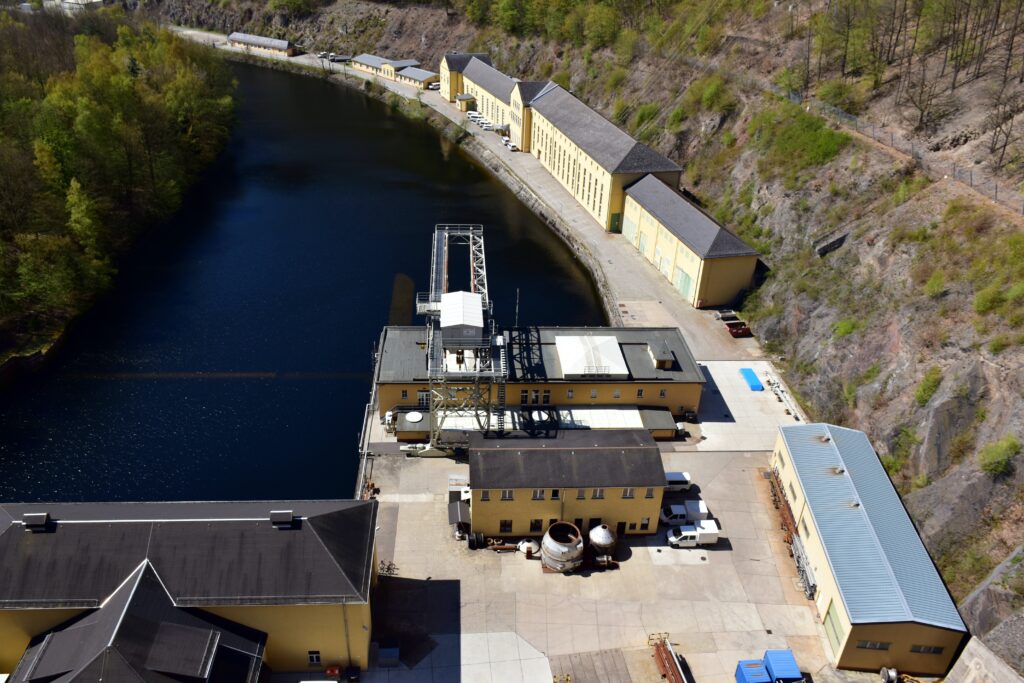So you’ve just moved into your new 2500 square foot house and now you’re faced with the question: how big of a generator do I actually need to power it? Well, worry not, because we’re here to help you with that! In this article, we’ll break down everything you need to know about choosing the right generator size for your home. From understanding your energy needs to considering the appliances you use most, we’ve got you covered. By the end, you’ll know exactly what size generator is perfect for keeping your house running smoothly during any power outage. Let’s get started!
Understanding Power Needs for a 2500 Square Foot House
List of typical household appliances
In order to determine the power needs for a 2500 square foot house, it is important to have a clear understanding of the typical household appliances that will be used. These appliances can vary in power consumption, so knowing what they are and how much energy they require is crucial.
Common household appliances include refrigerators, freezers, washers and dryers, dishwashers, ovens and stoves, microwaves, air conditioners, heaters, water heaters, lighting fixtures, televisions, computers, and various small appliances such as coffee makers, toasters, and blenders.
Common electrical uses for a 2500 square foot home
A 2500 square foot home typically requires electricity for various purposes, including heating and cooling, lighting, cooking, cleaning, entertainment, and maintaining comfort. Heating and cooling systems, such as air conditioners and heaters, consume a significant amount of power. Lighting fixtures throughout the house, including both indoor and outdoor lights, also contribute to the overall power usage. The kitchen, with its appliances like ovens, stoves, dishwashers, and refrigerators, is another area where electricity usage is prominent. Additionally, electronic devices and entertainment systems in living areas, bedrooms, and home offices add to the overall power consumption.
Estimating energy usage
To estimate the energy usage of a 2500 square foot house, it is important to consider the wattage ratings of the appliances and devices being used. Each appliance or device typically has a label or specification indicating its power consumption in watts or kilowatts. By adding up the wattage of all the appliances, we can get an approximation of the energy usage. It’s important to note that the actual energy usage may vary depending on factors such as usage patterns, energy-saving features, and insulation levels in the house.
Primer on Generators
How generators work
Generators are devices that generate electrical power. They consist of an engine, typically powered by gasoline, diesel, or propane, which turns a rotor inside a generator head to produce electricity. The produced electricity is then converted from AC (alternating current) to DC (direct current) if needed, using a rectifier.
Different types of generators: Portable, Standby, Inverter
There are different types of generators available in the market, each with its own advantages and suitable applications. Portable generators are compact and can be easily moved from one location to another. They are often used for outdoor activities, construction sites, or as a temporary power backup during emergencies. Standby generators, on the other hand, are permanently installed outside the house and automatically turn on when the main power supply fails. They are typically connected to the house’s electrical system and can provide power for an extended period. Inverter generators are known for their quiet operation and fuel-efficient performance. They are especially useful for powering sensitive electronics due to their stable and clean power output.
Importance of generator capacity
The capacity of a generator refers to the amount of power it can produce. It is measured in watts and determines how many electrical devices and appliances the generator can support simultaneously. Having a generator with the appropriate capacity is crucial to ensure that all necessary appliances and devices can be powered without overloading the generator. Insufficient capacity can lead to power outages or damage to the generator, while excess capacity may result in unnecessary fuel consumption or increased costs.

Factors Affecting the Size of the Generator Needed
Number and type of appliances
The number and type of appliances in a 2500 square foot house play a significant role in determining the size of the generator needed. Certain appliances, such as air conditioners, refrigerators, and water heaters, require a higher amount of power to operate compared to smaller appliances like televisions or lamps. It is important to consider the wattage requirements of each appliance and prioritize which ones are essential in case of a power outage.
Continuous versus starting wattage
When estimating the size of the generator needed, it is important to distinguish between continuous wattage and starting wattage. Continuous wattage refers to the power required to keep an appliance running once it is turned on, while starting wattage refers to the additional power needed to start an appliance. Appliances with motors, such as refrigerators or air conditioners, may require a higher starting wattage. It is essential to take this into account when determining the generator size to ensure it can handle the initial surge of power required.
Energy-efficient appliances versus older models
Energy-efficient appliances are designed to consume less energy while providing the same functionality as their older counterparts. When considering the size of the generator needed, it is important to note that newer, energy-efficient appliances generally require less power to operate compared to older models. Upgrading to energy-efficient appliances can not only reduce the generator size required but also result in long-term energy savings.
Approximating the Wattage Requirement for a 2500 Square Foot House
General rule for wattage per square foot
A general rule for estimating the wattage requirement for a house is to allocate approximately 1,000 to 1,500 watts per 1,000 square feet of living space. Applying this rule to a 2500 square foot house, we can estimate a base wattage requirement of 2,500 to 3,750 watts just for basic needs.
Extra allowances for high usage appliances
Certain appliances or devices may have higher power requirements due to their nature or frequency of use. For example, air conditioners or electric heaters often consume a significant amount of power. It is important to determine the wattage requirements of these high-usage appliances and add them to the base wattage requirement.
Spanish peaking wattage
Spanish peaking wattage refers to the additional wattage required during peak periods when multiple appliances or devices are running simultaneously. This peak demand is usually temporary and occurs during periods such as meal preparation or hosting gatherings. It is advisable to factor in an additional allowance of 20-30% on top of the base wattage requirement to accommodate Spanish peaking wattage.

Recommendations for Generator Size for a 2500 Square Foot House
Generator sizes for basic needs
For a 2500 square foot house with basic needs, a generator with a capacity of 3500 to 5000 watts would generally be sufficient. This size generator should be able to power essential appliances and devices such as refrigerators, lighting fixtures, a few small appliances, and electronics.
Generator sizes for average usage
If the household has average power usage and includes appliances like air conditioners, heating systems, and larger kitchen appliances, a generator with a capacity of 5000 to 8000 watts would be more suitable. This size generator can handle the additional power requirements of these appliances without overloading.
Generator sizes for high power usage
For households with high power usage, such as homes with multiple air conditioners, large heating systems, swimming pools, or additional outbuildings that need power, a generator with a capacity of 8000 watts or more would be recommended. This larger generator would have the necessary power output to support the higher demand.
Understanding Generator Ratings
Meaning of generator ‘watts’
The term ‘watts’ in reference to generators represents the capacity of the generator to produce electrical power. It indicates how many electrical devices or appliances can be simultaneously powered by the generator.
Differences between peak or surge watts and running or rated watts
Generators are often rated with two different wattage values: peak or surge watts, and running or rated watts. Peak/surge watts refer to the maximum power output the generator can provide for a short period, usually during start-up or when an appliance with a high starting wattage is connected. Running/rated watts, on the other hand, indicate the continuous power output the generator can sustain over an extended period.
Importance of appropriate generator ratings
Choosing a generator with appropriate ratings is crucial to ensure that it can handle both the starting wattage and the continuous power needs of the connected appliances. An underpowered generator may struggle to start appliances with high starting wattage and could potentially get overloaded, whereas an overpowered generator may result in wasted fuel and unnecessary expenses.

How to Properly Size Your Generator
Step-by-step guide for computing needed generator size
To properly size your generator, follow these steps:
- Make a list of all the appliances and devices that will need to be powered.
- Determine the starting wattage and running wattage of each appliance.
- Add up the running wattage of all the appliances to determine the base wattage requirement.
- Identify any appliances with high starting wattage and add them to the base wattage requirement.
- Consider any additional allowances for Spanish peaking wattage during high demand periods.
- Determine the total wattage requirement based on the previous steps.
- Select a generator size based on the total wattage requirement, considering a suitable margin for future needs.
Tools and resources for estimating generator size
Estimating the generator size can be made easier by using online tools or resources specifically designed for this purpose. These tools often provide a step-by-step process, allowing users to input their appliance information and calculate the required generator size. Consult manufacturer specifications and guidelines for appliances to ensure accurate wattage requirements.
Caveats and cautionary notes on generator sizing
It is important to keep in mind that generator sizing is not an exact science and may require adjustments based on personal circumstances or preferences. Factors such as climate, specific appliance requirements, and usage patterns may influence the size needed. It is recommended to consult with a professional electrician or generator specialist for a more precise assessment and recommendations.
Potential Consequences of Incorrect Generator Sizing
Damages and risks posed by underpowered generators
Using an underpowered generator can lead to several issues, including potential damages to both the generator and the powered appliances. When a generator is overloaded, it can cause damage to its internal components, resulting in costly repairs or even the need for a replacement. Additionally, underpowered generators may not provide sufficient power to keep essential appliances running, leaving the household without necessary functions during a power outage.
Cost inefficiencies of overpowered generators
On the other hand, using an overpowered generator can lead to cost inefficiencies. Larger generators typically consume more fuel, resulting in higher running costs. Purchasing and maintaining an overpowered generator may also involve unnecessary expenses that could have been avoided by choosing a more suitable generator size.
Implications to home insurance and warranties
Using a generator that does not meet the power requirements of a 2500 square foot house may have implications on home insurance and warranties. Improperly sized generators may not meet the safety standards required by insurers, potentially rendering the policy void in case of damages or accidents. Additionally, warranties on appliances may be affected if they are connected to a generator that does not provide the necessary power, potentially leading to expensive repairs or replacements not covered by the warranty.
Case Studies: Generator Sizes for Different 2500 sq ft House Scenarios
Scenario 1: Minimal usage
For a 2500 square foot house with minimal usage, such as a single person or a small family, a generator with a capacity of 3500 to 5000 watts should be sufficient. This size generator can power essential appliances and devices, including a refrigerator, minimal lighting fixtures, a few small appliances, and electronics.
Scenario 2: Average usage
In an average usage scenario, where a 2500 square foot house accommodates a small to medium-sized family, a generator with a capacity of 5000 to 8000 watts would be more suitable. This size generator can support additional appliances like air conditioners, larger kitchen appliances, and multiple electronic devices without overloading.
Scenario 3: High power usage
For a 2500 square foot house with high power usage, such as a large family or a house with multiple air conditioners and heating systems, a generator with a capacity of 8000 watts or more is recommended. This larger generator will be able to handle the increased power demand without compromising performance.
Choosing the Right Generator for a 2500 Square Foot House
Assessing your home’s power necessities
To choose the right generator for a 2500 square foot house, it is crucial to properly assess your home’s power necessities. Make a comprehensive list of all appliances and devices that will need to be powered during a power outage. Consider the wattage requirements, both running and starting, of each appliance. Prioritize essential appliances and devices to ensure they receive power without overloading the generator.
Consideration of generator features and price
When choosing a generator, it is important to consider additional features that may be beneficial for your specific needs. Some generators offer features like automatic start-up, fuel efficiency, noise reduction capabilities, or remote monitoring. Consider these features alongside the generator’s price to find the best balance between functionality and affordability.
Making the most of your generator choice
After selecting a suitable generator for your 2500 square foot house, make the most of your choice by following proper maintenance and usage guidelines. Regularly service the generator to ensure its optimal performance and longevity. Familiarize yourself with the generator’s user manual and operating instructions, and store an adequate supply of fuel for emergencies. These measures will help ensure that you are prepared for power outages and that your generator continues to meet your home’s power needs effectively.
In conclusion, understanding the power needs for a 2500 square foot house is crucial in determining the appropriate generator size. By considering the number and type of appliances, continuous versus starting wattage, and the efficiency of appliances, an estimate of the wattage requirement can be made. It is recommended to select a generator size based on the specific needs of the household, with consideration for basic needs, average usage, or high power usage scenarios. Understanding generator ratings and sizing the generator properly can help avoid potential consequences of underpowered or overpowered generators. By following proper guidelines, assessing power necessities, and considering features and price, homeowners can choose the right generator to ensure their 2500 square foot house is adequately powered during an outage.




